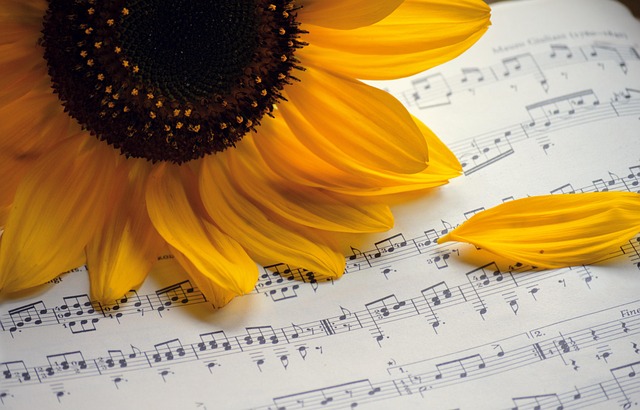Reverb, a sonic tool that mimics natural spaces, enhances songs by adding depth and immersive atmospheres. Music production uses both natural and digital reverb types to create diverse landscapes. Balancing reverb with other elements is crucial for cohesive song structure, influencing mood and genre-specific aesthetic. Correct application deepens the song's emotional resonance and connects listeners to its narrative.
“Unleash the power of reverb to elevate your songs into immersive soundscapes. This guide navigates the art of using reverb effects, offering a symphony of insights for musicians and producers. From understanding reverb as a sonorous canvas to crafting balanced mixes, you’ll learn how to choose the perfect type for each track. Discover tips for enhancing your song’s atmosphere, creating spaciousness, and avoiding common pitfalls. Dive into these strategies to revolutionize your audio production.”
- Understanding Reverb: The Sonorous Canvas
- Choosing the Right Reverb Type for Your Song
- Crafting a Balanced Mix: Applying Reverb Effectively
Understanding Reverb: The Sonorous Canvas

Reverb, often described as a sonic mirror, is a powerful effect that can transport listeners to different acoustic spaces. Understanding reverb goes beyond merely recognizing its presence in music; it’s about grasping how it shapes and enhances our auditory experiences. In essence, reverb adds depth and dimension to a song, creating an immersive atmosphere that connects the listener to the musical narrative.
The impact of reverb is particularly evident when comparing classical vs. modern music genres. Traditional classical compositions, with their intricate musical notation and reading skills, often rely on natural acoustic spaces for reverb, enhancing the emotional resonance and grandeur of performances. In contrast, contemporary music production frequently employs digital reverb plugins to achieve a wide range of sonic landscapes, from spacious ambiences to subtle hall echoes, thus catering to diverse artistic visions. Exploring interactive music learning platforms can further deepen your understanding of reverb’s role in musical expression, enabling you to unlock the full potential of this effect in your creative endeavors. To gain practical insights and enhance your skills, visit us at music industry career paths anytime.
Choosing the Right Reverb Type for Your Song

When crafting a song, selecting the appropriate reverb type is akin to choosing the perfect stage lighting design for a live performance—it significantly impacts the overall atmosphere and emotional resonance. Different reverb types evoke unique environments, from spacious concert halls to intimate underground caves. For instance, a dense, long-lasting reverb can create a sense of vastness, ideal for epic choruses or ambient tracks, while a shorter, lighter reverb enhances the natural space of vocals or acoustic instruments in more intimate settings.
In music production, mixing and mastering techniques play a crucial role in manipulating reverb to achieve balance. Experimenting with different reverb types on chord progressions for songwriters can transform a mundane track into something dynamic. For instance, applying a subtle, natural-sounding reverb to your guitar chords can make them soar, while overdoing it might create an overly muddy mix. Incorporating reverb thoughtfully—considering both the song’s genre and intended mood—can elevate your music production, whether for live performances or studio recordings, adding depth and cultural significance that resonates with listeners across different genres. Visit us to explore more about dancing to different genres and their cultural significance.
Crafting a Balanced Mix: Applying Reverb Effectively

Crafting a balanced mix is key to achieving a cohesive sound in your song. Reverb, as an essential effect, plays a crucial role in this process by adding depth and space to your tracks. The art lies in applying it judiciously; too much can create an unwelcome echo, while too little may leave the mix sounding flat. Start by analyzing the track’s elements: vocals, instruments, and their respective levels. Each element should have its own distinct space in the mix, with reverb helping to blend them together seamlessly. For example, applying a subtle reverb effect to vocals can create a sense of ambiance, while a more pronounced setting on guitars or drums can enhance their impact without overwhelming other instruments.
Consider the genre and style of your music. In classical compositions, where every note holds significance, appreciating the complexity of the piece informs how you apply reverb. It might be used sparingly to highlight certain sections, allowing the listener to savor the intricate details in the music. In contrast, jazz or blues styles, as explored in improvisation: jazz and blues, often embrace a more relaxed approach, utilizing reverb to create an atmospheric feel that invites listeners into the musical journey. When crafting your mix, give us a call at Improvisation: Jazz and Blues Styles for expert guidance tailored to your creative vision.
Reverb is a powerful tool in your audio arsenal, capable of transforming your songs into immersive, spatial experiences. By understanding reverb types and applying them thoughtfully, you can create a balanced mix that enhances your music without overpowering it. Whether you’re aiming to recreate a live venue feel or craft an ethereal atmosphere, effective use of reverb can elevate your tracks to new heights, making your song stand out in any playlist.








Leave a Reply